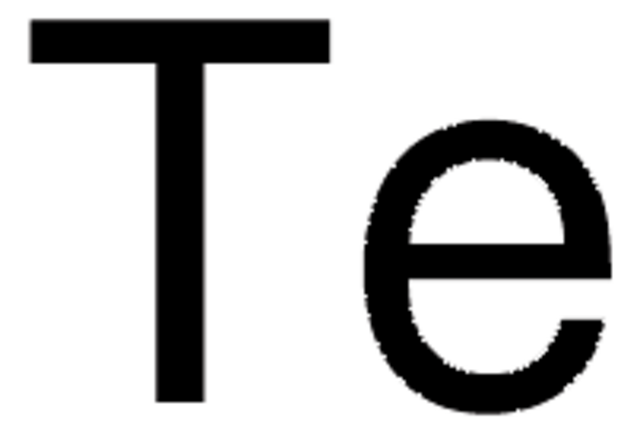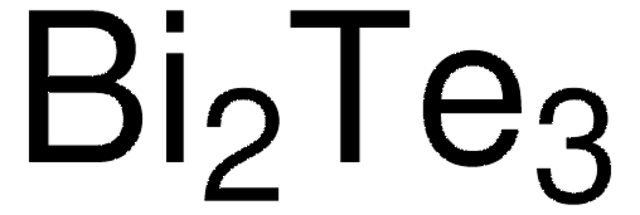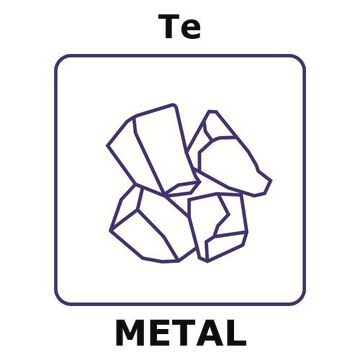266418
Tellurium
powder, −200 mesh, 99.8% trace metals basis
About This Item
Recommended Products
Quality Level
Assay
99.8% trace metals basis
form
powder
resistivity
5.8-33 μΩ-cm, 20°C
particle size
−200 mesh
bp
990 °C (lit.)
mp
450 °C (lit.)
density
6.24 g/mL at 25 °C (lit.)
SMILES string
[Te]
InChI
1S/Te
InChI key
PORWMNRCUJJQNO-UHFFFAOYSA-N
Looking for similar products? Visit Product Comparison Guide
Related Categories
General description
Application
- Tellurium-based nanomaterials for semiconductor application, such as CdTe nanoparticles via solvothermal synthesis.
- Quantum dot solutions for fluorometric determination of bioactive compounds.
- Thermoelectricmaterials, such as Cu4Mn2Te4 by the melting-quenching-SPS method.
Signal Word
Danger
Hazard Statements
Precautionary Statements
Hazard Classifications
Acute Tox. 4 Inhalation - Aquatic Chronic 4 - Lact. - Repr. 1B - Skin Sens. 1B
Storage Class Code
6.1D - Non-combustible acute toxic Cat.3 / toxic hazardous materials or hazardous materials causing chronic effects
WGK
WGK 2
Flash Point(F)
Not applicable
Flash Point(C)
Not applicable
Personal Protective Equipment
Regulatory Listings
Regulatory Listings are mainly provided for chemical products. Only limited information can be provided here for non-chemical products. No entry means none of the components are listed. It is the user’s obligation to ensure the safe and legal use of the product.
EU REACH Annex XVII (Restriction List)
Choose from one of the most recent versions:
Already Own This Product?
Find documentation for the products that you have recently purchased in the Document Library.
Customers Also Viewed
Global Trade Item Number
| SKU | GTIN |
|---|---|
| 266418-100G | 4061826133880 |
| 266418-25G | 4061826133897 |
| 266418-500G | 4061826133903 |
Our team of scientists has experience in all areas of research including Life Science, Material Science, Chemical Synthesis, Chromatography, Analytical and many others.
Contact Technical Service









